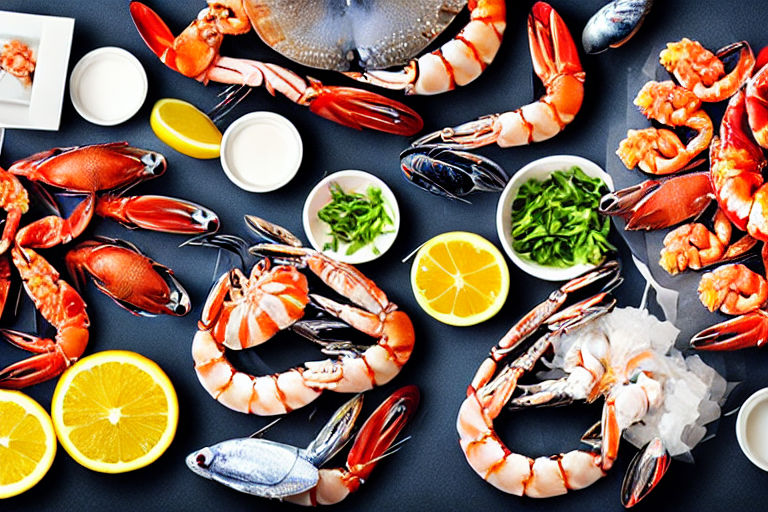Discovering Sustainable Seafood: A Beginner's Guide
As many of us become more conscious about the impact that our actions have on the environment, the demand for sustainable seafood continues to grow. Sustainable seafood refers to fish and other sea creatures that are caught or farmed in ways that don't harm the environment or other marine life, and that can be maintained over the long-term without depleting the resource.
If you're new to the world of sustainable seafood, navigating the choices and terminology can be overwhelming. This beginner's guide will help you understand the basics of sustainable seafood and make informed choices that are good for you, and good for the planet.
Understanding sustainability
Sustainability in seafood can be a complex topic, but it essentially comes down to three things: the health of the fish population, the impact on marine ecosystems, and the social and economic impact on the fishing communities that rely on the resource.
When you're looking for sustainable seafood options, there are some key things you should consider:
- Species: Some species of fish are more vulnerable to overfishing or are caught using methods that harm the environment. Look for species that are abundant, well-managed, and caught or farmed in ways that don't harm the environment.
- Method of catch/farming: Some fishing methods have a lower impact on the environment than others. For example, line-caught fish tend to have a lower bycatch (unwanted catch) rate than trawl-caught fish, and some types of fish farming (such as shellfish) have a much lower impact on the environment than others (such as salmon farming).
- Certification: There are a number of certification schemes that assess the sustainability of seafood, such as the Marine Stewardship Council (MSC) for wild-caught fish and the Aquaculture Stewardship Council (ASC) for farmed seafood. Look for seafood that carries one of these certifications.
Finding sustainable seafood
One of the best ways to find sustainable seafood is to ask questions. When you're buying seafood from a restaurant, fishmonger, or supermarket, ask where it comes from, how it was caught or farmed, and whether it carries any sustainability certifications.
You can also look for logos or labels that indicate the seafood is sustainable. The MSC and ASC logos are two of the most widely recognized sustainable seafood certifications, but there are others as well. Some supermarkets and restaurants have their own sustainability initiatives or certifications, so look out for those too.
Sustainable seafood recipes
Once you've found your sustainable seafood, the fun part begins – cooking and eating it! There are countless delicious recipes that feature sustainable seafood, from classic fish and chips to impressive seafood paella.
When you're planning your sustainable seafood meal, keep these tips in mind:
- Try something new: There's a whole world of sustainable seafood out there that you might not have tried before. Experiment with new species and flavours to discover some new favourites.
- Mix it up: Don't just stick to the same old salmon fillet – try different cuts and preparations, such as grilled octopus or pan-fried sardines.
- Keep it simple: Sustainable seafood is often best served simply, with just a few complementary flavours that let the freshness and natural flavour shine through.
Conclusion
Discovering sustainable seafood is a journey, but it's a rewarding one. By choosing sustainable seafood, you're supporting responsible fishing and farming practices that protect our oceans and the creatures that call them home. So next time you're in the market for seafood, ask questions, look for certifications, and try something new – your taste buds (and the planet) will thank you.



